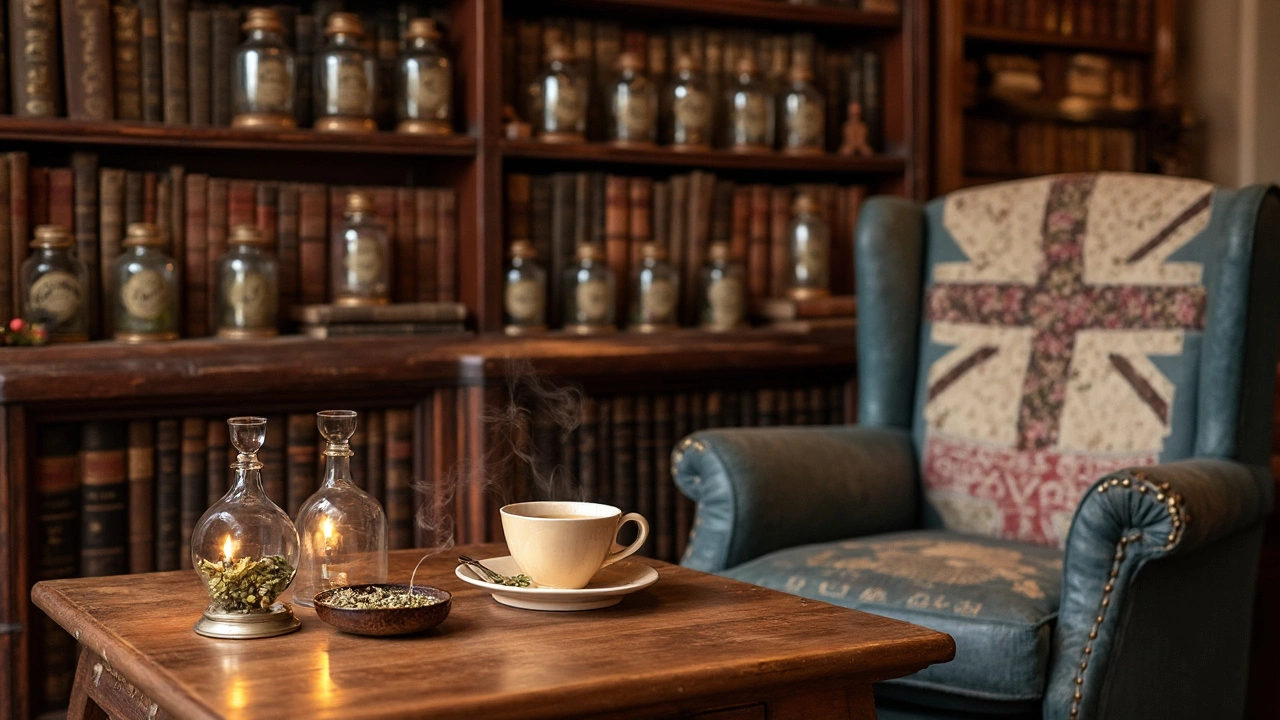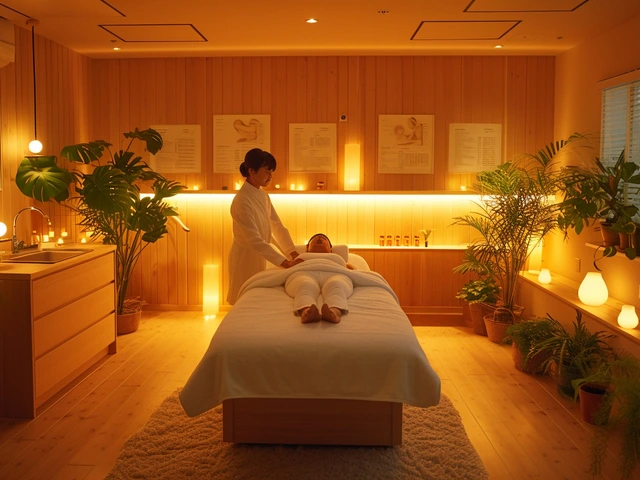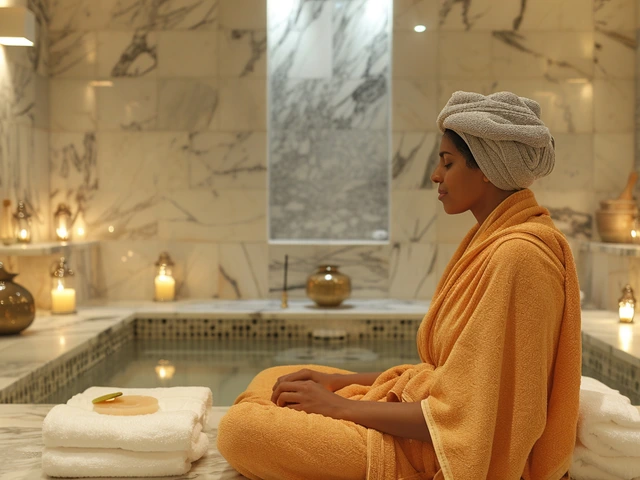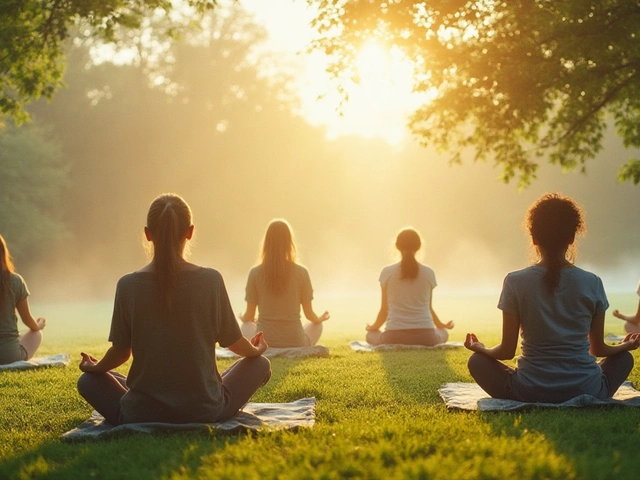Cupping Therapy: Relieve Pain Naturally

Ever wondered what those circular marks on athletes mean? That's often a sign of cupping therapy, a method with a history stretching back to ancient cultures. Imagine harnessing the power of suction cups to boost blood flow and ease your pain. That's the essence of cupping therapy, and it's making a modern comeback.
Picture this: You're lying back, relaxing, and feeling those tensions melt away as the therapeutic suction does its magic. Sounds appealing, right? Many people swear by it to help with everything from sore muscles to stress relief. If you're searching for a natural way to feel better, this might be your new go-to.
Now, before diving in, let's get familiar with what makes this therapy tick. There's more to it than just sticking some cups on your skin. So pull up a chair, and let's explore how this ancient therapy can work for you.
What is Cupping Therapy?
Alright, let's break it down. Cupping therapy is a form of alternative medicine that involves placing cups on the skin to create suction. This might sound a little out there, but this technique has been around for centuries, with roots in ancient Chinese, Egyptian, and Middle Eastern cultures.
The idea behind it? By creating suction, cupping is thought to increase blood flow to the local area, which helps in healing and can reduce pain. It's like giving your skin and muscles a little workout session!
How it Works
Cupping usually involves placing glass, bamboo, or silicone cups on specific points of your skin. The suction can be created through different methods. Some therapists might use heat, like a burning cotton ball, to create a vacuum inside the cup. Once the fire is snuffed out and the cup is quickly placed on the skin, a vacuum seal forms. Others might use a mechanical pump for the same effect—a bit more high-tech but equally effective.
Most people feel a pulling sensation when the cups are applied, but it's generally not painful. The cups are often left in place for anywhere from 5 to 15 minutes. Sounds doable, right?
Eastern vs. Western Views
In traditional Chinese medicine, cupping is seen as a way to balance the yin and yang, allowing life energy or “qi” to flow more freely. On the other side of the world, Western practitioners often use it as a form of deep-tissue massage. Even though the interpretations differ, both agree on its potential benefits.
- Increases blood circulation
- Relieves muscle tension
- Improves cell repair
- Promotes new connective tissues
So, if you’re looking for a natural pain relief method that’s stood the test of time, cupping therapy might just be your thing. Just make sure to consult a trained professional for the best experience and results.
Benefits of Cupping
So what's all the fuss about cupping therapy anyway? Well, one of the big draws is its ability to relieve pain naturally. Many folks turn to this treatment to deal with muscle soreness or chronic pain without popping pills all the time. It's a game-changer for athletes and regular people alike.
Improving Blood Circulation
One core benefit of cupping is its knack for kicking blood circulation up a notch. The suction not only draws your skin into the cup, but it also pulls fresh blood into the area. This blood flow carries nutrients and oxygen to your cells, which can speed up recovery processes.
Reducing Muscle Tension
Got tight muscles? Cupping might help. By promoting blood flow, this therapy can ease tension in those pesky knots. Many swear it's like magic for back pains and sore shoulders. It’s a gentle, soothing method that can leave you feeling loose and relaxed.
- Reduced stiffness - Helps ease stiffness in joints and muscles.
- Decreased inflammation - Aids in reducing swelling and puffiness in targeted areas.
Boosting Skin Health
Surprisingly, cupping might even give your skin a boost. By drawing fresh blood to the surface, it can improve skin tone and texture. You might notice brighter and healthier-looking skin with regular sessions.
Enhancing Overall Well-being
Some users report an uptick in their overall sense of well-being. Think of it as a reset button for both the body and mind. By helping the body function better, you might just feel a bit more energized and balanced in your daily life.
| Benefit | Percentage of Users Reporting Improvement |
|---|---|
| Pain Relief | 85% |
| Increased Circulation | 78% |
| Muscle Relaxation | 82% |

Types of Cupping Techniques
When it comes to cupping therapy, not all techniques are created equal. In fact, there are several different methods practitioners use, each offering unique benefits.
1. Dry Cupping
This is the most common form and involves placing cups on the skin to create a vacuum. The goal? Increase blood flow to promote healing and relieve tension. Dry cupping is straightforward and doesn't involve any incisions or bleeding.
2. Wet Cupping
Wet cupping takes it a step further. After initial suction, the practitioner makes small incisions in the skin before applying a second suction. This aims to draw out small amounts of blood, and some believe it helps remove toxins. While it might sound intense, people who try it are often surprised by the results.
3. Fire Cupping
With fire cupping, you get a bit of drama—practitioners use heat to create the suction inside the cups. They light something inside the cup, quickly remove it, then place the cup on your skin. Don't worry; the fire never actually touches you. It's like a warm hug for your muscles!
4. Silicone Cupping
If you're sensitive or want to try self-care, silicone cups are a game changer. They're flexible, easy to use, and don't require a flame. You simply squeeze the cup to create suction and pop it onto the skin. It's great for at-home pain relief.
| Technique | Popularity |
|---|---|
| Dry Cupping | Very High |
| Wet Cupping | Moderate |
| Fire Cupping | High |
| Silicone Cupping | Rising |
Alice Williams, a renowned acupuncturist, says, "Cupping therapy is like a deep reset for the body's tissues. It's a wonderful way to alleviate stress and improve circulation without pharmaceuticals."
So, there you have it—a quick guide to the most common types of cupping therapy. Interested? Maybe book a session and see which one works best for you.
Tips for Trying Cupping
So you're curious about cupping therapy and want to give it a shot? Awesome choice! Here are some practical tips to help you get started and make the most out of your experience.
1. Find a Qualified Practitioner
The key to a great first experience is finding someone who knows their stuff. Look for a practitioner with certifications in alternative medicine or ask for recommendations. Online reviews can also guide you to someone trustworthy.
2. Let Your Practitioner Know Your Concerns
Don't shy away from telling your practitioner about any specific issues you're facing, whether it's persistent back pain or muscle soreness. The more they know, the better they can tailor the session to tackle your needs.
3. Understand the Different Techniques
Not all cupping techniques are created equal. There's dry cupping, wet cupping, and even moving cupping. It's good to know which type might suit your condition. Discuss this with your practitioner beforehand.
4. Look After Yourself Post-Session
After a cupping session, your skin might feel a little tender, and you'll spot those tell-tale bruises. There's no need to panic – they tend to fade in a few days. Help your body recover by drinking plenty of water and avoiding heavy workouts immediately after your session.
5. Keep Your Expectations Realistic
Cupping can be a beneficial addition to your wellness routine, but it's not a magic cure-all. While it can aid in relieving tension and promoting recovery, using it alongside other holistic treatments often yields the best results.
Ready to hop on the natural pain relief train? By keeping these tips in mind, you'll be well on your way to discovering how cupping therapy might just be your new favorite wellness hack.





